Yakushiji Temple in Nara was built in 680 at the wish of Emperor Tenmu. This temple has two garans, Hakuho Garan and Genjyo Sanzoin Garan, and I’ll show you Hakuho Garan in this post.
*Garan: A Buddhist building or a place where the buildings are gathered.
Yakushiji Temple has a pedigree with a history of about 1300 years, but the Buddhist buildings were lost by war or disaster and were repeatedly rebuilt. Hakuho Garan, that we can see now, was started to be reconstructed in 1968 by Takada Koin, who was the temple’s head priest at that time, and the 50th anniversary of the start of the reconstruction was celebrated in 2018. Now, the garan dating from the time of this temple’s founding has almost been revived.
Garan Arrangement of Yakushiji Temple
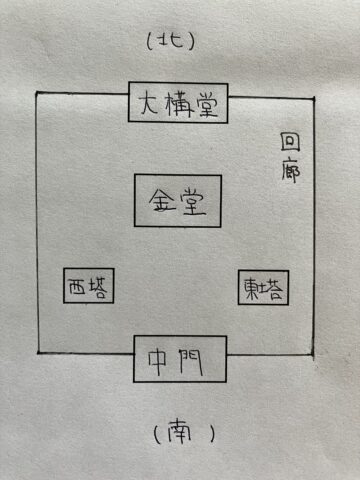
In this garan arrangement, an inner gate, pagodas, a main hall, and a lecture hall are arranged in this order in the direction from the south to the north. A pair of pagodas are built in symmetry with each other on the right and left sides of the main hall. This garan arrangement is called “Yakushiji Temple Style Garan Arrangement.”
At the time of about 100 years later from the introduction of Buddhism, the main hall in which the principal image was deified was more important than the pagoda in which the stupa including the Buddha’s ashes was deified. The main hall stands in front of the inner gate, and the pagodas are on both sides of the center line.
First, I introduce Chumon, the Inner Gate.
The Inner Gate is a Nio-mon (Deva gate), and a structure one level below the gate is a cloister.
-
Inner Gate viewed from the south. The West Pagoda stands behind it.

-
Inner Gate viewed from the south. The East Pagoda stands behind it.
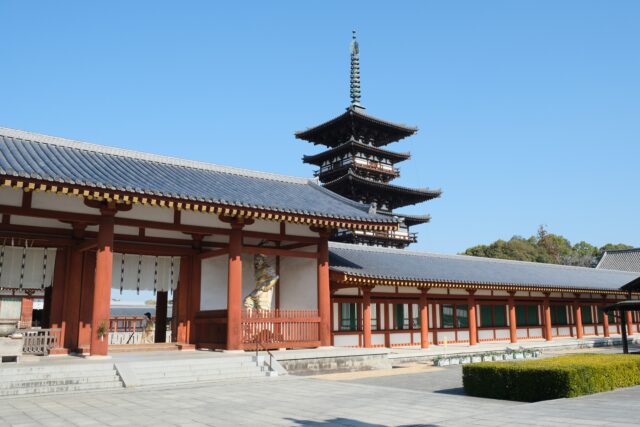
Kondo, the Main Hall, can be seen from the Inner Gate, as shown in this picture.
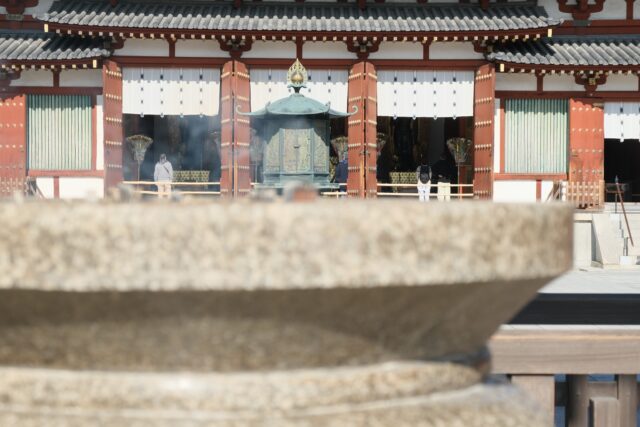
There are Saito, the West Pagoda, and Toto, the East Pagoda, on the north side of the Inner Gate. Although the pagodas appear to be 6-storied pagodas, the first, third and fifth roofs from the bottom are mokoshi, pent-roofs which are provided below a true roof for weather protection or decoration. So, these pagodas are three-storied pagodas.
In Yakushiji Temple, a pair of pagodas were built for the first time in Japan. The pagoda is the Buddhist building in which the stupa containing the Buddha’s ashes is deified, and the stupa is one. The Buddha’s ashes are deified in the West Pagoda in Yakushiji Temple.
The East Pagoda was founded in 730. Many other garans in this temple were burned down by war fire or collapsed by earthquake, but only this pagoda has remained from the foundation. The East Pagoda has a height of 34 meters, and was designated National Treasure.
East Pagoda viewed from West Pagoda
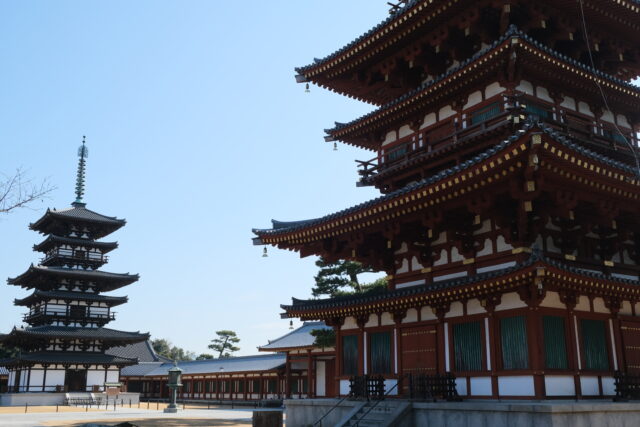
Kondo, the Main Hall, stands on the north side of the pagodas, in which the temple’s principal images, the Yakushi Triad (gilt bronze images of the Buddha), are housed. According to Nihon Shoki, Chronicles of Japan, the Triad was consecrated in 697, and since then they have remained in a near-complete state although the halls was burned down. The Triad have been designated a National Treasure.
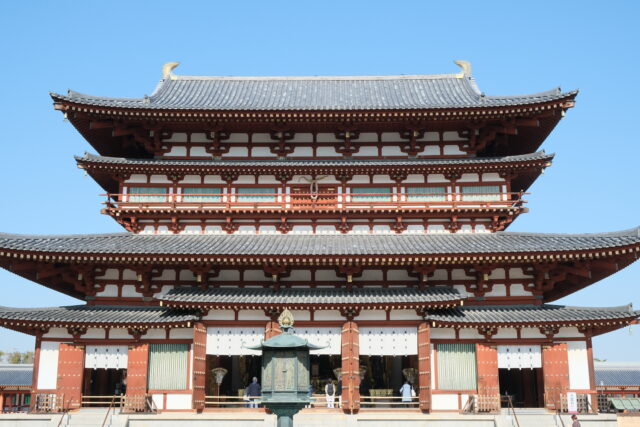
View from the north side, in which there are the Main Hall on the middle, the West Pagoda on the right side, and the East Pagoda on the left side.
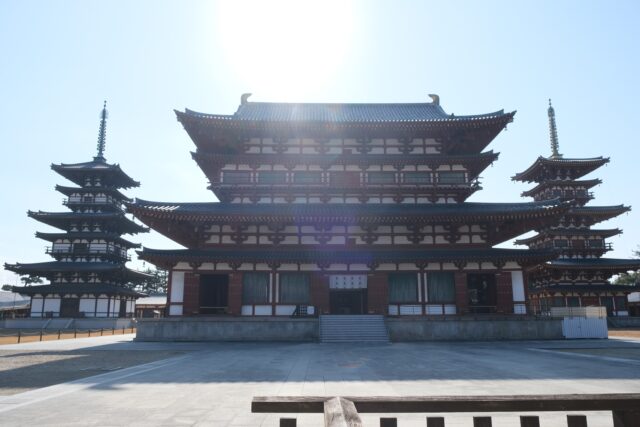
Main Hall and East Pagoda viewed from the west side.
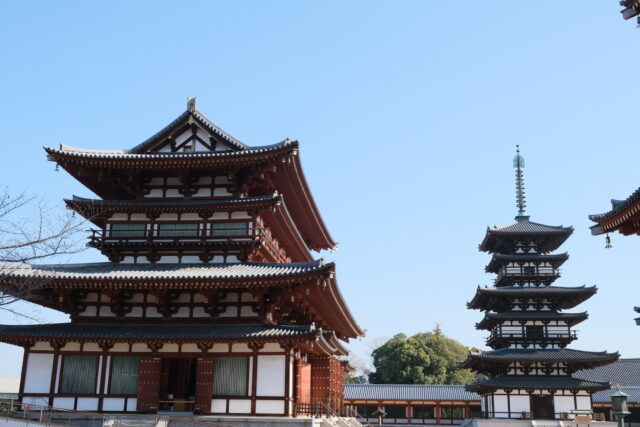
Dai-kodo, the Great Lecture Hall, stands on the north side of the Main Hall, in which Buddhist priests lecture or study the Buddhist Scriptures. This building is very wide, having a horizontal length of 41 meters. In this hall, Bodhisattva Triad, and the like, are housed, and you can enter the hall to see them.
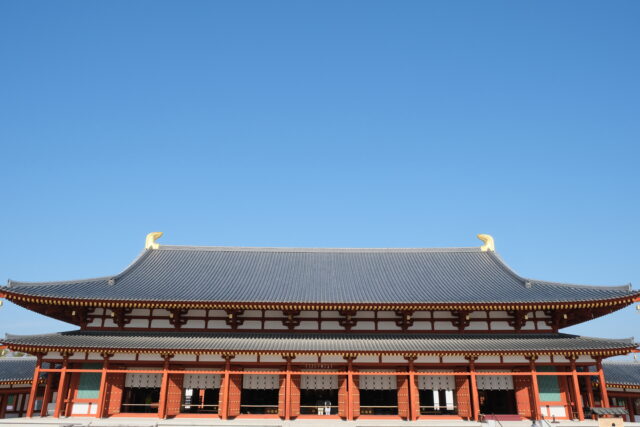
The Main Hall viewed from the south, and the Great Lecture Hall behind the hall.
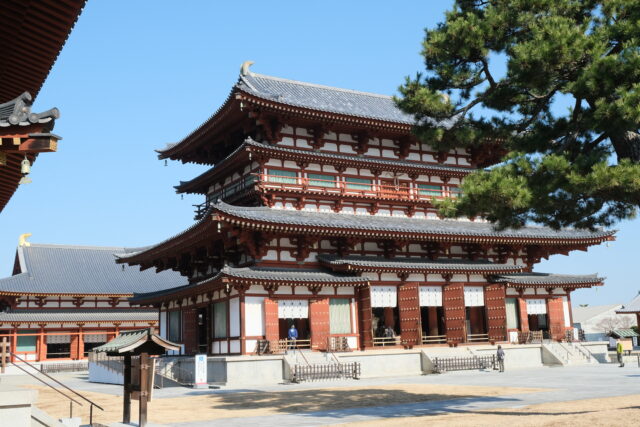
The Inner Gate, East Pagoda, Main Hall, and Great Lecture Hall viewed from the west.
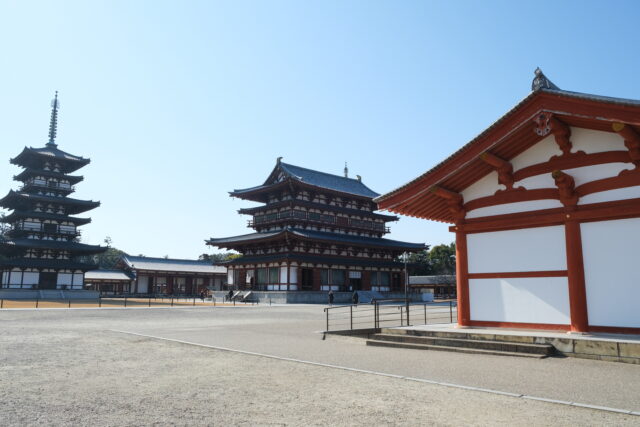
The Inner Gate, between the East Pagoda and the main hall, is located furthermost from this side, and the East Pagoda, Main Hall, and Great Lecture Hall that we can see its white wall and red pillars are lined up in this order. You can see an upper part of a sorin (finial of a Japanese pagoda, which is something like a bar made of metal and stands on the top of the tower (pagoda); it is difficult to see it from the picture, though.
A structure connecting the Inner Gate to the Great Lecture Hall, and enclosing the East Pagoda, Main Hall, and West Pagoda is the Cloister. The entasis columns seem not to be so swollen.
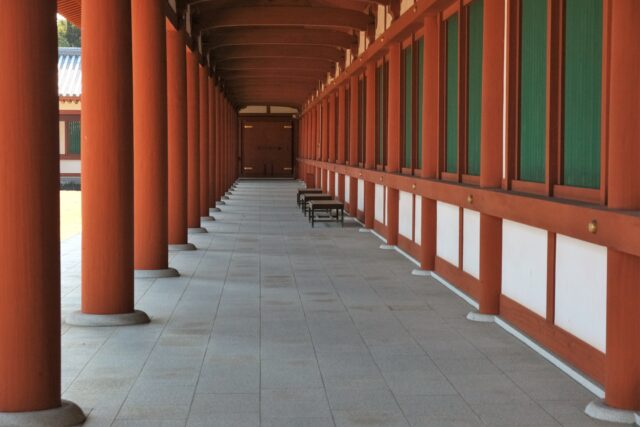
The goshin (red seal) that I got in Yakushiji Temple. “Yakushi Nyorai” (Bhaisajyaguru)
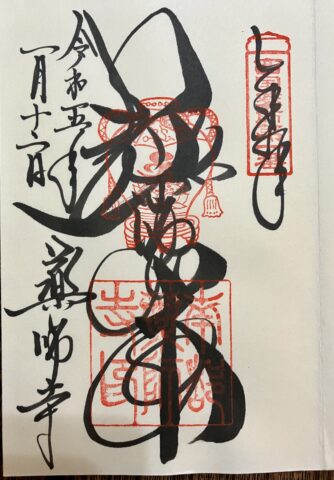


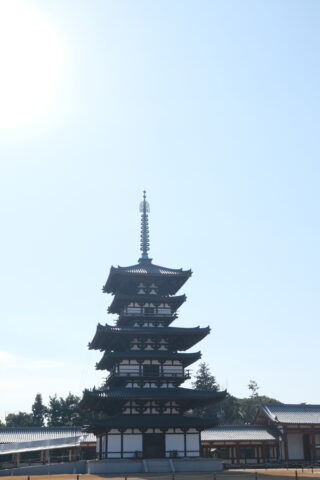
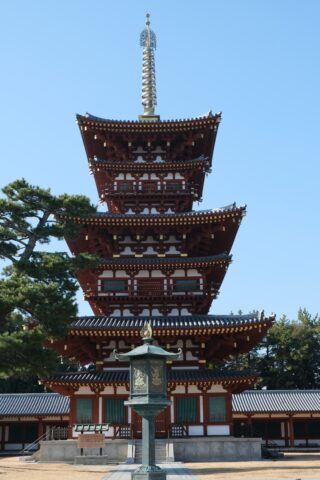
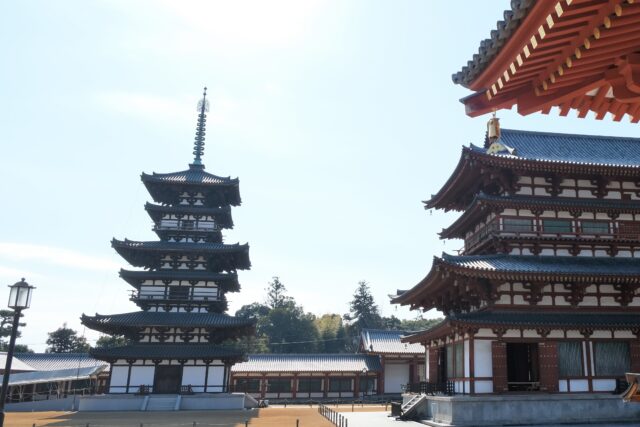
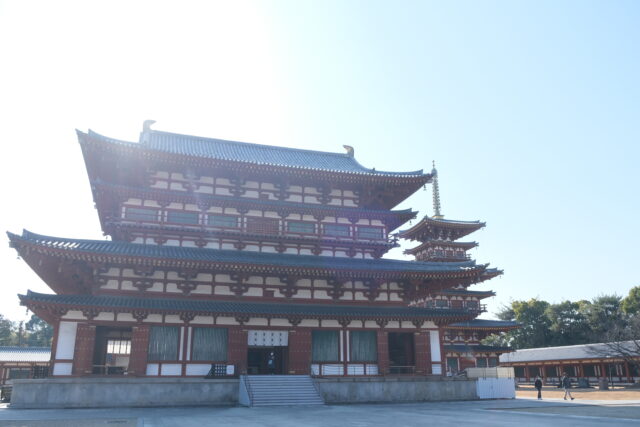
Leave a Reply